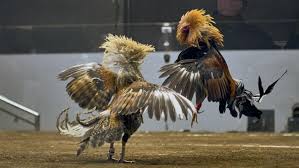The High-Stakes World of Cambodian Cockfighting: Where Tradition Meets Gambling

Cockfighting in Cambodia is more than just a blood sport—it is a deeply entrenched cultural practice that has, over the years, evolved into a lucrative gambling industry. At the intersection of tradition, rural entertainment, and high-stakes betting, cockfighting arenas across Cambodia now operate in ways that resemble miniature casinos. sv388 For many Cambodians, cockfighting is not just a pastime; it’s an economic opportunity, a social gathering, and a thriving form of underground gambling.
A Tradition Rooted in History
Cockfighting has been practiced in Cambodia for centuries, with roots going back to the Angkorian period. Historical reliefs on temple walls such as Bayon and Banteay Chhmar depict scenes of roosters fighting, indicating its popularity in ancient Khmer society. Traditionally, cockfighting was part of village festivals and religious celebrations, a test of breeding skill and animal bravery rather than a vehicle for financial gain.
However, as Cambodia’s economy began to liberalize in the late 20th and early 21st century, the nature of cockfighting began to change. sv388 casino No longer just a village game, cockfighting has grown into a major gambling industry—despite official bans.
Cockfighting as a Gambling Hub
In rural and urban areas alike, cockfighting pits often function as informal gambling dens. Bettors surround the ring, placing money not only on who will win, but also on how long the fight will last, how many rounds it will take, and other side bets. These wagers are typically unregulated, and the amounts can range from just a few thousand riel (a couple of dollars) to thousands of U.S. dollars.
In cities like Phnom Penh and Battambang, some cockfighting arenas resemble the layout and feel of casinos. They have designated betting areas, drink and food vendors, and in some cases even offer security and VIP sections for high-stakes bettors. While traditional casinos are legal in Cambodia for foreigners (particularly in border towns like Poipet and Sihanoukville), cockfighting gambling operates largely outside the law.
Despite its semi-clandestine nature, cockfighting continues to attract massive crowds—both for the thrill of the sport and the promise of fast money.
Technology and Online Betting
In recent years, digital technology has further transformed Cambodian cockfighting. Livestreamed matches are now broadcast to private groups on apps like Telegram, Facebook Live, and encrypted messaging services. These streams often include real-time betting options, allowing Cambodians both locally and abroad to participate in the betting from their smartphones.
Some operators have even built mobile-friendly platforms mimicking online casinos, where users can bet on cockfights alongside slot games and card tables. This blending of traditional animal sport and digital gambling is a unique hallmark of Cambodia’s underground economy.
Legal Gray Areas
While gambling is largely illegal for Cambodian citizens under the country’s 1996 Law on the Suppression of Gambling, enforcement is inconsistent. Authorities occasionally raid cockfighting rings and arrest organizers, but the practice persists, often with the quiet tolerance of local officials.
Many argue that the economic benefits and local popularity of cockfighting make it difficult to stamp out entirely. In rural provinces where economic opportunities are limited, cockfighting offers both entertainment and income. Some rooster owners invest heavily in training, feeding, and medicating their birds, akin to how horse owners prepare for races.
There are also allegations of corruption: local law enforcement sometimes receives kickbacks in exchange for allowing operations to continue without interference. This blurs the line between illegal activity and accepted local practice.
Ethical and Social Concerns
The growing commercialization of cockfighting has sparked concerns among animal rights activists and some Cambodian officials. Cockfighting is inherently brutal—roosters are often fitted with metal spurs, and matches can end in severe injury or death for the birds. The introduction of money and high-stakes gambling has only intensified the violence, as owners and bettors push for more aggressive and lethal fights.
Socially, gambling addiction is a growing issue in Cambodia, and cockfighting is part of that problem. Families have reportedly lost significant assets—homes, motorbikes, and savings—due to cockfighting debts. In some cases, gambling-related violence and disputes have led to injuries and even fatalities.
A Path Forward?
There have been proposals to regulate cockfighting rather than prohibit it entirely. Advocates suggest creating licensed arenas, enforcing ethical treatment of animals, and introducing betting caps to prevent financial ruin. They argue that a legal, transparent framework could reduce the corruption and abuse associated with underground cockfighting and even generate tax revenue.
However, others believe that legalizing cockfighting in any form sends the wrong message about animal welfare and responsible gambling. The government remains largely silent on the issue, leaving cockfighting in a legal gray area that persists despite the risk.
Conclusion
Cambodian cockfighting is a vivid example of how traditional cultural practices can intersect with modern gambling in complex and controversial ways. Part blood sport, part community gathering, and increasingly part casino, cockfighting represents both an enduring legacy and a growing challenge. As Cambodia grapples with economic development and shifting social norms, the future of cockfighting—and its place in the nation’s gambling ecosystem—remains uncertain.
